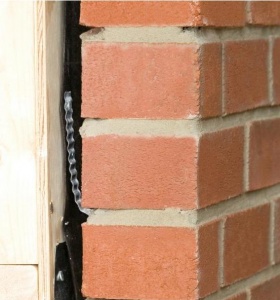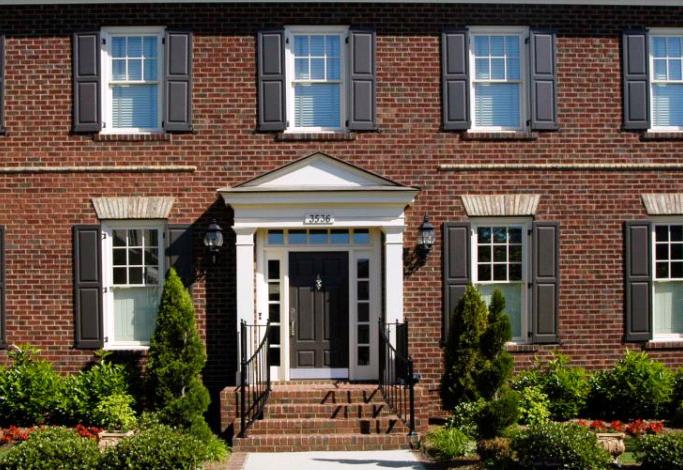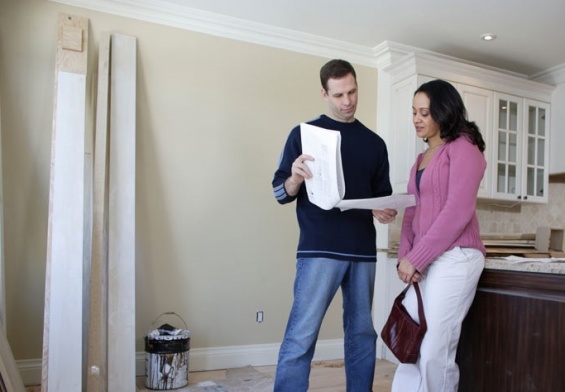Just think about this … in one neighborhood, all the homes might be from the same builder, yet no two homes look alike. They might have similar architectural styles, but they have different types of exterior materials used. The facades vary because some homes are constructed with brick, others with vinyl or wood siding, so no two look alike, especially once homeowners begin to add their own special touches to individualize, and personalize, and otherwise add curb appeal to their humble abode.
In most cases, exterior wall treatments serve to provide a decorative finish to the home, and, in some instances, it is strictly for weatherproofing purposes. For example, a brick or stone wall will provide structure and finish, however, a wood frame or block wall provides structure, but not unless it is finished and covered in siding or stucco.
Most people purchase their homes with the decorative finish already in place; they like the look of the house, and, they really don’t give much thought to changing the façade of the home until they are faced with a repair job. After consulting with a contractor, then the homeowner needs to decide whether they can merely try to match the existing materials to new materials, or, whether they must totally refurbish “from scratch” – the latter is often the case, especially if bricks cannot be matched, or existing siding is faded.
What Works For Some Houses
While it is fun to peruse the home decorating sites on the internet and check out the beautiful exteriors of homes in the decorating magazines, sadly, one realizes that those exterior wall treatments are not always a “go” for your home.
Actually, before you get infatuated with any type of exterior decorating, you, (or most likely the exterior remodeling contractor with whom you consult before beginning a project), will need to check out your City’s building codes and regulations. Interestingly, the codes vary from region to region, area to area and city to city. For example, when a residential or commercial building is in a historic district, you must check with local authorities before making any alterations to the building; likewise, this protocol must be followed when you are in a homeowners’ association. Rules and regs always vary, but, some are stricter than others, i.e. it may be necessary to obtain permission just to use a certain color of paint.
The Cladding Material
While you are perusing decorating sites and planning renovations of any type to the exterior of your home, your best bet is to select a few different examples before arranging for a consult with an exterior remodeling contractor near you. That contractor’s skills in working with a variety of cladding materials, a/k/a building supplies which are used as a facing or protective covering for your home, will help you to select just the right materials depending on your personal preference and budget, and the climate as well. You might be keen on one type of material, but, your skilled contractor’s past experience and skill in this area may cause him or her to make a better recommendation for your home. Below are the most-popular exterior finishing options:
 Siding is found on most newer homes and comes in a variety of styles. Siding not only provides a decorative finish for your home, but, it provides a layer of weatherproofing protection against the wood cavity wall. There are many decorative possibilities when you use siding – 1) you may place siding on the entire home, or just partially side the home for a different decorative effect; or, 2) you can place the siding “boards” either horizontally or vertically; or 3) you may choose real wood or natural stone or just opt for faux products which mimic the natural products. Other synthetic materials such as fiber cement board, vinyl or aluminum are also used in siding. All are good decorative options, with the exception of wood, which will indeed enhance your home, but there is more maintenance involved to keep the wood looking good, as well as insect, rot and warp-free. Siding is usually applied on top of a moisture barrier such as building paper, or a breather membrane. The latter helps to stop water from entering a wall, but allows vapor within the wall to escape. There are various types of siding available, though most people are only familiar with the aluminum and/or vinyl siding which are most common. You should be aware that even though these are pricier than stucco or vinyl façade, their qualities such as durability and aesthetic value will add curb appeal to any home. A summary of the siding types is below:
Siding is found on most newer homes and comes in a variety of styles. Siding not only provides a decorative finish for your home, but, it provides a layer of weatherproofing protection against the wood cavity wall. There are many decorative possibilities when you use siding – 1) you may place siding on the entire home, or just partially side the home for a different decorative effect; or, 2) you can place the siding “boards” either horizontally or vertically; or 3) you may choose real wood or natural stone or just opt for faux products which mimic the natural products. Other synthetic materials such as fiber cement board, vinyl or aluminum are also used in siding. All are good decorative options, with the exception of wood, which will indeed enhance your home, but there is more maintenance involved to keep the wood looking good, as well as insect, rot and warp-free. Siding is usually applied on top of a moisture barrier such as building paper, or a breather membrane. The latter helps to stop water from entering a wall, but allows vapor within the wall to escape. There are various types of siding available, though most people are only familiar with the aluminum and/or vinyl siding which are most common. You should be aware that even though these are pricier than stucco or vinyl façade, their qualities such as durability and aesthetic value will add curb appeal to any home. A summary of the siding types is below:
- Brick is one type of cladding material that is a higher-priced choice due to the labor-intensive installation and the cost of the materials. Brick will make the home more durable, but can add 25% more to the cost of your home’s construction.
- Natural stone, like brick, is also labor-intensive, even more so than brick because of the heavier weight.
- Cultured stone is a synthetic alternative to natural stone. The faux stone provides a natural look that replicates natural stone in size, shape and texture, and it is lightweight, thus making installation much easier. All these factors help to reduce the price for this natural stone knockoff.
- Wood, as mentioned above, requires more maintenance on the part of the homeowner to keep it looking good. Price-wise, it also may add 25% more to the cost of home construction, and, sometimes even more as lumber products are subject to price fluctuations.
- Composite or engineered wood is perfect for you if you love the look of wood siding because it is less costly and less maintenance as well. Composite wood consists of wood chips which are reduced to fiber and mixed with resin to create a product which is a versatile, durable, natural-looking but less-costly siding product.
Stucco functions as both a decorative and weatherproofing covering for your home that also helps to protect the wall’s structure. It is generally applied directly to blocks or bricks, or onto metal laths (sheets of wire mesh that help adhesion). The end result is a pleasing decorative finish. There are several types of stucco finishes available such as 1) smooth; 2) smooth with light texture; 3) patterned texture which is smooth but may be tooled to produce various patterns; or 4) rough which is a finish achieved by applying pebbles into the damp stucco for a more highly textured finish. While you might request a stucco finish from the builder when choosing a new home, you can also apply stucco onto brick, but it is not a do-it-yourself project and must be done by a professional with advanced plastering skills in order to achieve the featured finished product. Additionally, stucco-style panels with stucco finish already in place are also available for installation, but again – this is a job that is best left to the professional.
If you wish to go green for your home finish, here are some options:
There is something for everyone if you want to save Mother Earth – if you like natural wood, but the cost is formidable for your budget, you might wish to consider using reclaimed wood. If aluminum siding is your preference, but you feel it is cost-prohibitive to your pocketbook, consider using recycled aluminum. Lastly, if the idea of clay tiles as a decorative finish is something you’d covet, go to a reclamation yard where you can purchase, then repurpose the tiles, making this an eco- and budget-friendly option.




